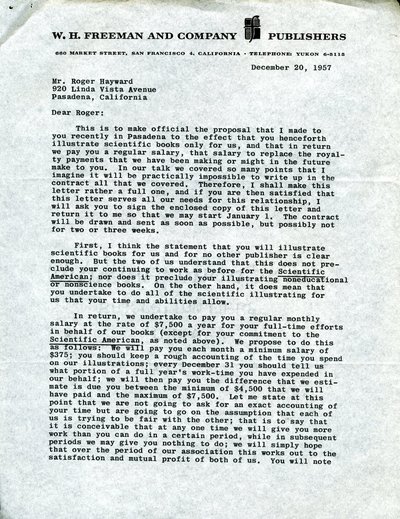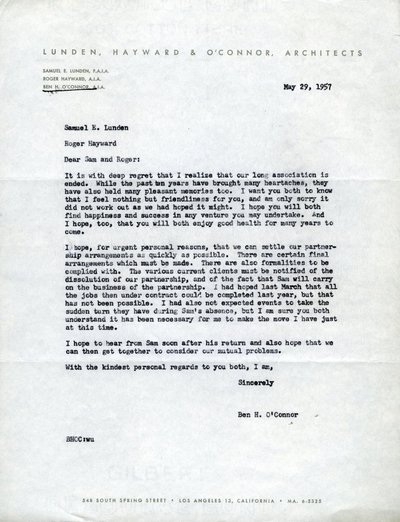During the first stages of Roger’s new contract with W. H. Freeman & Co., various difficulties arose in terms of disputes with authors, Roger’s health insurance claims and worries over his method of remuneration. This eventually led to a tense discussion with Bill Freeman wherein the ten-year contract was ultimately cancelled and Roger was returned to his royalty form of compensation. The dialogue between Freeman and Roger became very testy and took a toll on their relationship, but the dispute was, by and large, settled satisfactorily for both parties. The conflict had been exacerbated, in ways, by difficulties in Freeman’s personal life, but when later discussing the slight parting of ways with acquaintances, Roger admitted fault for shortcomings on his part.
Roger continued his relationship with Scientific American much as before, though his correspondence became more directed towards C. L. Stong and Dennis Flanagan as the decade wore on. Roger’s compensation disagreements with W. H. Freeman & Co. were very likely affected by his ideal financial relationship with Scientific American. He took great pleasure in the seemingly informal but dependable transactions that took place when he delivered work to the magazine, for which there was typically little stress afforded. The sentiment was reflected in his attitudes toward work and life in general, in which he attempted to strike his own unique personal balance between freedom and professional obligation:
“To me the fundamental question involved is, accept the pain of earning the cash for the expected fun of spending it, or will you accept poorer but pleasanter pickins. Years ago I sold out for the latter philosophy…doing what you want is an expensive luxury.”
Various projects were constructed by the Lunden, Hayward & O’Connor architectural firm during this time period, including the Los Angeles City Health Building. After a while, however, Roger found himself engaged in a disquieting dialogue with Ben O’ Connor, one of the firm’s partners, who had grown frustrated with Roger’s disposition and lack of involvement in the day-to-day operations of the company. The business was eventually dissolved in 1957 as a result of this, and final efforts were made to finish the firm’s remaining projects. Roger later admitted that he had been essentially forced to resign and was frightened of the resulting financial uncertainty, but that the outcome had ultimately been for the best.
Afterwards, Roger continued his consultation with Caltech, aiding in the design of the Sloan Laboratory, and spent a great deal of time designing and pursuing a patent for a new pen, an endeavor that he worked on with Bradley Lewis for over a decade. For all practical purposes, however, Roger considered himself to be retired. On the whole he enjoyed his new condition and shared with friends that he and Betty were “scandalously comfortable.” In his new capacity, Roger enjoyed a gin or vodka cocktail before lunch and another at about 4 pm, usually joined by Betty.

Correspondence re: Roger Hayward's employment agreement with W. H. Freeman & Co., 1957-1958. More images here

